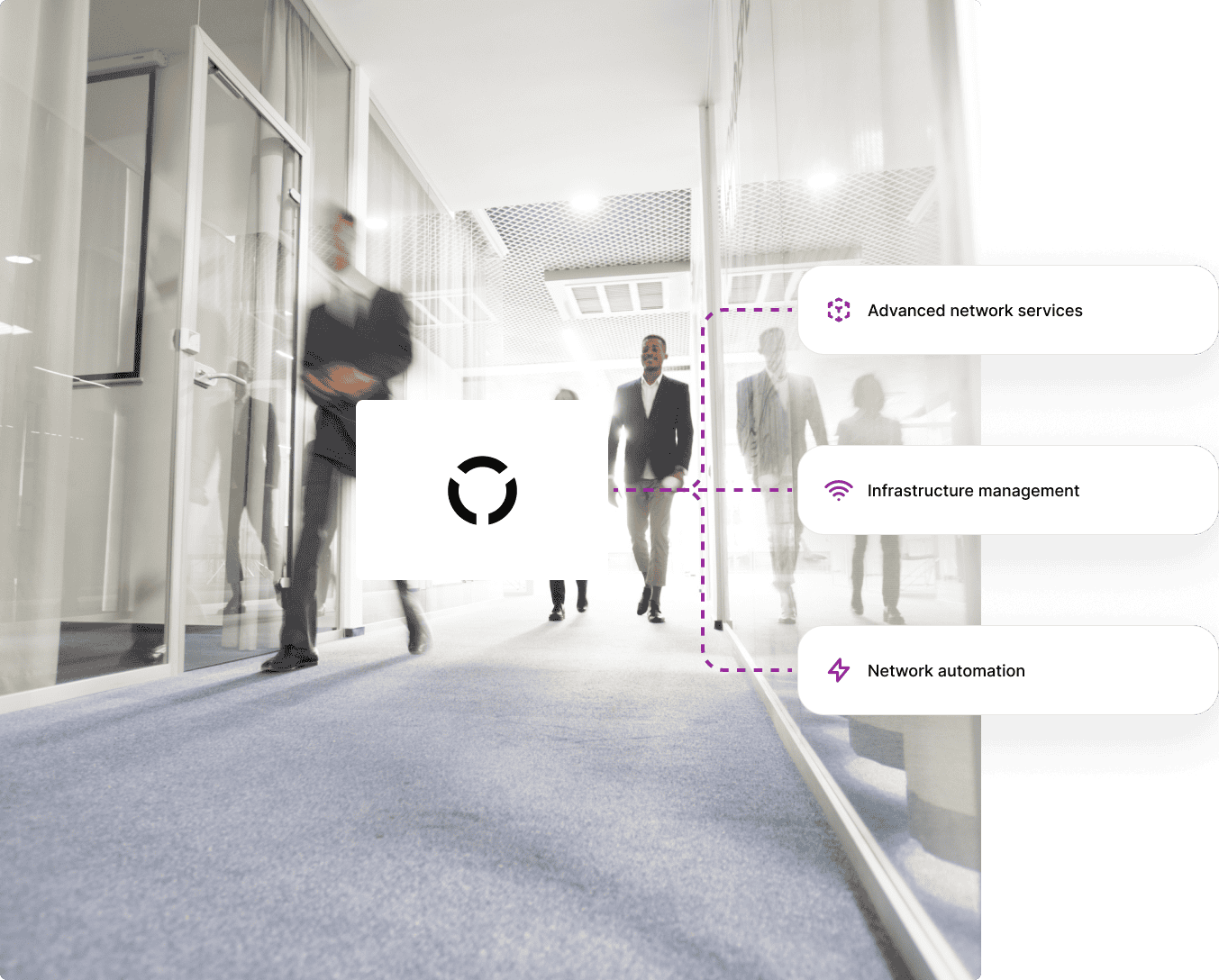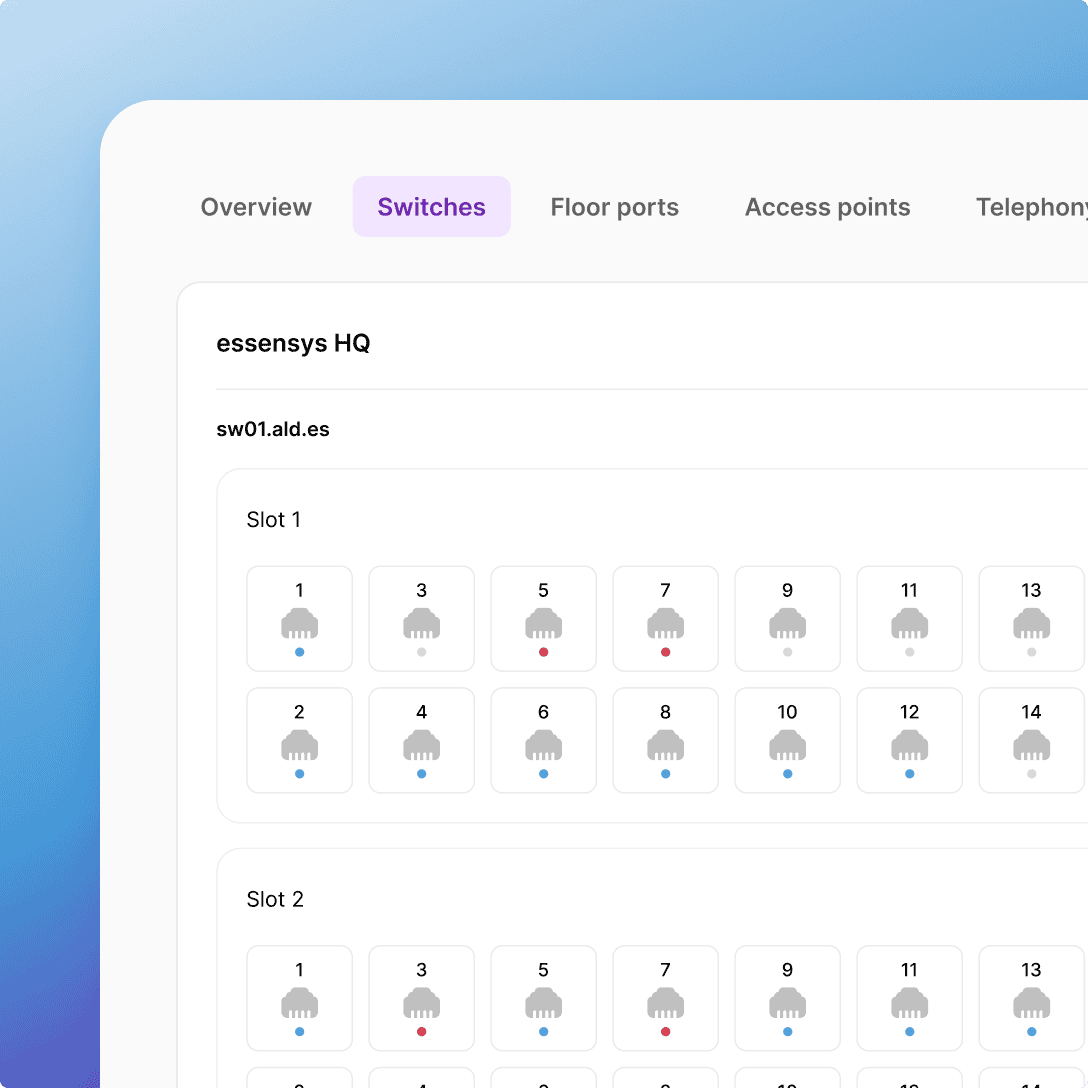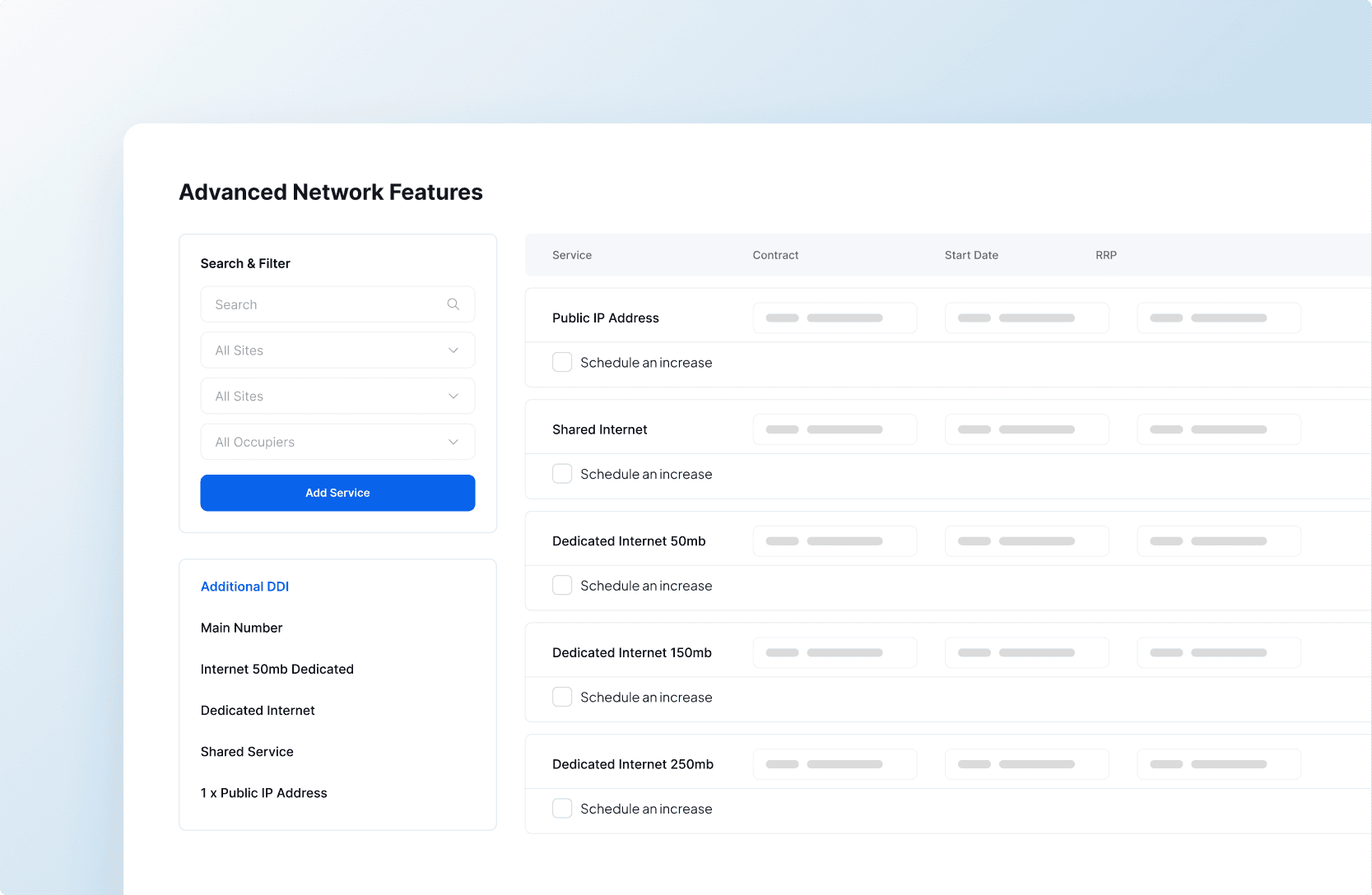
Advanced network management at your fingertips

Software-controlled digital infrastructure
-
Switch & port management: Manage & configure network infrastructure & services across your portfolio remotely via software.
-
Automated: Remove complexity from technical processes & replace manual processes. Control your network via software & let essensys Platform automate the rest.
-
Hardware-agnostic: Network Manager is compatible with leading enterprise-grade network equipment.

Advanced network features & enhanced security
-
Provision & manage enterprise-grade network services: Advanced network offerings, including: Public IP addresses, dedicated bandwidth, voice services, & more.
-
Create private VLANs for every tenant: Automatically provide every tenant with a private VLAN, for an added layer of security.
-
Automated provisioning: Spin up & close down network services quickly & easily, using automation to replace manual processes that require technical knowledge.

FAQ’s
How does Network Manager work?
Network Manager is an add-on capability to essensys Platform. If selected, customers are able to control digital infrastructure, provision advanced network services & deliver enhanced security for tenants.
What does Network Manager do?
Network Manager provides advanced network management features, including remote software control of switches and ports, automated provisioning of network services, and the ability to manage and distribute networks efficiently across your portfolio.
Is the Network Manager compatible with existing network hardware?
In many cases, yes. Network Manager is compatible with leading enterprise-grade network equipment. This allows you to reuse your existing infrastructure without the need for costly hardware replacements.
If your existing equipment isn’t compatible, we offer services to procure, install and manage new hardware and/or circuits.
What are private VLANs, and how do they enhance security?
Private VLANs (Virtual Local Area Networks) provide each tenant with their own isolated network segment. This added layer of security ensures that tenant data is separated, minimizing the risk of unauthorized access and protecting sensitive information within multi-tenant environments.